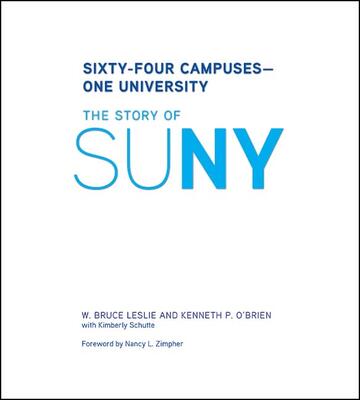
Sixty-Four Campuses—One University
The Story of SUNY
Handsome, fully illustrated history of the sixty-four State University of New York campuses.
Description
America's public higher education systems are one of the triumphs of post–World War II society, the workhorses of a truly American invention—mass higher education—that has spread throughout the world. As the largest comprehensive public university system in the country, the State University of New York has played a critical role in that dramatic tale. Educating more than half a million students through sixty-four campuses spread across the Empire State, SUNY's incredibly diverse system offers degree and certificate programs for every postsecondary need through its network of thirty community colleges, seven colleges of technology, thirteen comprehensive (master's level) colleges, seven specialized and contract colleges, and eight doctoral institutions.
Born out of the swirling ethnic, racial, and religious currents of New York in the years after World War II, SUNY began modestly by connecting existing colleges that had been created for specific needs, especially teacher education and agricultural and technical training. Then, driven by Governor Nelson A. Rockefeller, SUNY was transformed: community colleges were founded across the state, research universities were created, existing campuses were expanded and new ones were constructed—and enrollment soared. Despite being one of the youngest public university systems in the United States, SUNY has emerged as one of the nation's leaders.
SUNY's remarkable history is not one story, but sixty-five—the sagas of sixty-four separate campuses partnering within one university system—and the whole has truly been greater than the sum of its parts. The book's organization around New York's ten economic development regions reflects SUNY's critical role in the state's society and economy. The stories of the various campuses are told through essays and photographs that focus on each institution's history and its continuing relation to its region and its residents. What emerges from this volume is a deeper understanding of the extraordinary variety of needs met by public higher education in New York. This is the complex and fascinating history of the State University of New York: sixty-four campuses, one university.